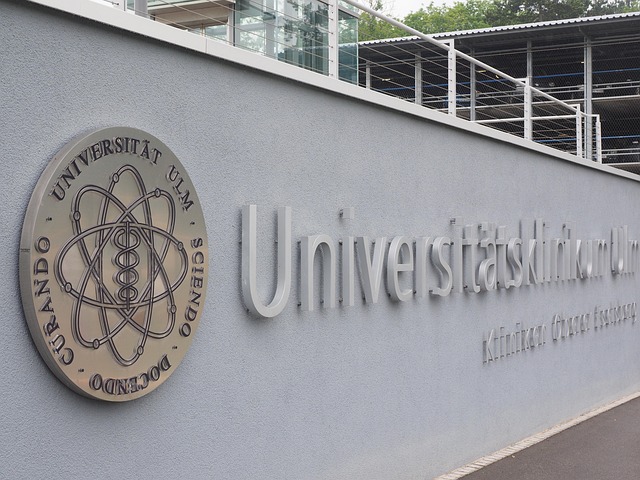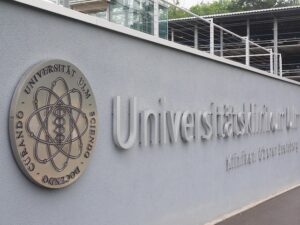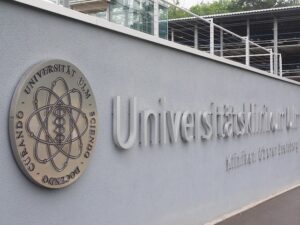Navigating Multilingual University Policies: Accessibility and Accuracy
Understanding and navigating university regulations and policies is crucial for international students and all stakeholders, especially regarding language requirements. Universities mandate specific language proficiency tests (e.g., TOEFL, IELTS) and…….

Understanding and navigating university regulations and policies is crucial for international students and all stakeholders, especially regarding language requirements. Universities mandate specific language proficiency tests (e.g., TOEFL, IELTS) and may accept documents in languages other than the academic language with translation and verification. Accurate localization of regulations involves cultural adaptation to preserve fairness and relevance across global contexts. Professional translators and local experts are vital for clarity, consistency, and cultural sensitivity in multilingual environments. Digital platforms enhance accessibility and engagement with university guidelines.
In today’s globalized educational landscape, understanding and adhering to university regulations and policies in diverse languages is paramount. This comprehensive guide explores the intricacies of submitting academic policies in any language, covering key aspects such as translation methods, cultural adaptation, accuracy assurance, student rights, and digital accessibility. Discover best practices for navigating multilingual regulations and ensuring inclusive communication within higher education institutions.
- Understanding Language Requirements for University Policies
- Translating and Localizing Education Regulations
- Adapting Global Guidelines to National Languages
- Ensuring Accuracy in Policy Interpretation
- The Role of Translation Services in Higher Education
- Student Rights and Responsibilities Across Languages
- Challenges and Best Practices in Multilingual Regulations
- Digital Platforms for Accessible University Policies
Understanding Language Requirements for University Policies
Understanding Language requirements is a vital step in navigating university regulations and policies, especially for international students or those whose first language isn’t the primary academic language used by their institution. Many universities mandate that all official documents, including policy statements, guidelines, and contracts, be submitted in a specific language to ensure clarity and consistency in communication. This often means fluency in the language of instruction, which can vary widely depending on the university’s location and academic programs.
For instance, English is the dominant language in many international higher education institutions, requiring students to possess proficient English-language skills. However, some universities may accept documents in other languages, subject to translation and verification. It’s crucial to check each institution’s specific requirements for language proficiency testing, such as TOEFL or IELTS scores, which can be essential for demonstrating language competency for university regulations and policies compliance.
Translating and Localizing Education Regulations
Translating and localizing education regulations is a complex process that goes beyond mere word-for-word translation. When adapting university policies for a new language, cultural context, and educational system, accuracy and relevance are paramount. It’s not just about converting text; it’s about ensuring that the spirit and intent of the original regulations are preserved while making them accessible and meaningful to the target audience.
This involves careful consideration of legal terminology, idiomatic expressions, and cultural nuances. For instance, a policy regarding academic integrity in one country might need to be rephrased or expanded upon to reflect unique societal views on honor and plagiarism in another. Localizing University Regulations & Policies requires a deep understanding of both the source and target languages and cultures to maintain consistency, fairness, and effectiveness across educational institutions worldwide.
Adapting Global Guidelines to National Languages
In today’s globalized educational landscape, universities often find themselves balancing the need for consistent University Regulations and Policies with the cultural nuances required to adapt them to various national languages. This process involves a careful translation and localization effort to ensure that international students and faculty can fully comprehend and comply with institutional guidelines.
The challenge lies in maintaining the integrity of global standards while rendering them accessible and culturally relevant. Simple word-for-word translations may not capture the essence or context, leading to potential misinterpretations. Therefore, professional translation services and local subject matter experts are often engaged to adapt university regulations and policies into different languages, ensuring clarity and consistency across all campus communities.
Ensuring Accuracy in Policy Interpretation
Understanding and interpreting university regulations and policies is a critical aspect of student life. Accuracy in this process is paramount to ensure students comply with essential rules and avoid potential consequences. When navigating University Regulations and Policies, it’s crucial to approach them as legally binding documents. Each word and phrase carries weight, and any misinterpretation could lead to misunderstandings or unfair treatment. Students should familiarize themselves with the official language used, ensuring they grasp the nuances and implications.
Clarity is essential in policy documentation. Universities should strive for straightforward, concise writing to minimize ambiguity. However, some terms may require further explanation, especially those with legal or academic connotations. Utilizing accompanying guides or seeking clarification from relevant authorities can help dispel any doubts. This proactive approach ensures students treat University Regulations and Policies as a dance of precise steps, where each movement has a specific purpose and consequence.
The Role of Translation Services in Higher Education
In today’s globalized academic landscape, the submission of university regulations and policies in multiple languages has become increasingly important. This is where translation services play a pivotal role. With institutions attracting students and faculty from diverse linguistic backgrounds, ensuring accessibility and comprehension through accurate translations is essential.
Professional translation services enable universities to convey their rules and guidelines effectively, fostering an inclusive environment. These services not only streamline the administrative process but also guarantee that every stakeholder, regardless of native language, fully understands their rights and responsibilities within the academic community. Accurate translations of university regulations and policies are a cornerstone in promoting diversity, equity, and accessibility in higher education.
Student Rights and Responsibilities Across Languages
When it comes to understanding student rights and responsibilities, language should never be a barrier. Universities are required to provide all regulatory and policy documents in accessible languages, ensuring that every student can navigate their academic environment with clarity. This is not only a matter of fairness but also facilitates inclusivity, enabling students from diverse linguistic backgrounds to actively participate in campus life.
The availability of translated university regulations empowers students to know their entitlements, such as freedom of speech, privacy rights, and academic integrity expectations. Similarly, it clarifies responsibilities like adhering to attendance policies, respecting intellectual property, and understanding the consequences of academic misconduct. Such transparency fosters a culture of mutual respect and accountability within the student body.
Challenges and Best Practices in Multilingual Regulations
Navigating university regulations and policies in a multilingual context presents unique challenges. One significant hurdle is ensuring consistency and accessibility across diverse linguistic backgrounds. Students, faculty, and staff may refer to documents written in their native languages, leading to potential misinterpretations and confusion. The diversity of language skills also varies widely, with some individuals fluent in multiple languages while others struggle with even basic communication in a second or foreign language. This dynamic necessitates the availability of accurate translations and accessible formats for all regulations and policies.
Best practices in addressing these challenges include employing professional translation services to ensure precision and cultural sensitivity. Universities should also consider providing multilingual resources on their websites, offering language support programs, and training staff on cross-cultural communication. Additionally, implementing user-friendly digital platforms can facilitate the distribution and updating of translated regulations and policies, ensuring everyone has access to up-to-date information in their preferred language.
Digital Platforms for Accessible University Policies
In today’s digital era, universities are increasingly leveraging online platforms to make their regulations and policies easily accessible to all students and faculty. This shift towards digitalisation offers several advantages, including improved visibility, quick updates, and better user engagement. Universities can create dedicated websites or portals where these documents are categorised and searchable, ensuring users can find relevant rules and guidelines without hassle.
Such platforms often incorporate features like text-to-speech functionality for visually impaired students, downloadable PDFs, and multilingual support to cater to diverse student bodies. This accessibility is not only a matter of convenience but also promotes inclusivity and ensures all members of the university community can actively participate in understanding and adhering to institutional guidelines.
University regulations and policies, while essential for institutional order, can pose significant challenges when it comes to multilingual environments. As institutions expand globally, understanding and adhering to language requirements is crucial. Translating and localizing education regulations accurately ensures that students from diverse backgrounds are treated equitably, fostering an inclusive learning environment. Effective adaptation of global guidelines to national languages, coupled with robust translation services, plays a vital role in navigating this complex landscape. By leveraging digital platforms, universities can ensure accessible policy interpretation, enhancing student rights and responsibilities across all languages, while also addressing the unique challenges that arise from multilingual regulations.






